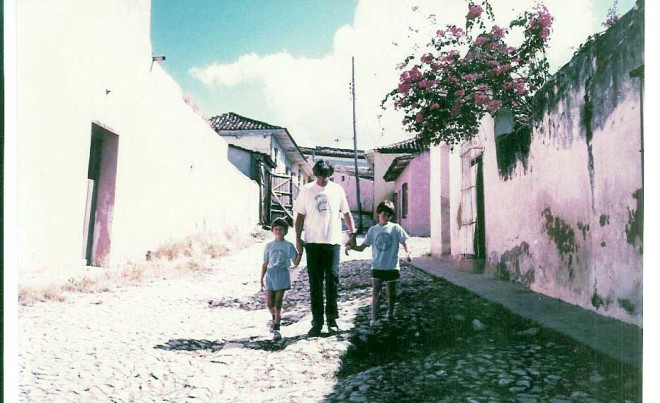Big Brother Was Watching
/The big red diagonal stripe across the hull was unmistakable: the U.S. Coast Guard. But we were almost certain that we were in Cuban waters. What was the U.S. Coast Guard doing here? It seems they had the same question of us. What were WE doing here, they queried over Channel 16 on the VHF radio.
At first we pretended not to hear them, but it was hard to ignore their growing presence in our wake as they kept a tight course on us. The international boundary must not have been far off because the the vessel suddenly seemed to mark time, sitting in place. "U.S. Coast Guard to sailing vessel: Who are you; what is your nationality; what is your vessel's name; where are you going; where are you coming from…?" the radio called repeatedly. They knew we must have seen them. We stalled for time. We didn't want to identify the name or ethnicity of our boat, although we were sure with binoculars they had already gleaned this from the name emblazoned on our canvas cloths on our port and starboard sides, as well as the obligatory American flag that flew from our stern.
"Yes, sailing vessel Cowabunga to U.S. Guard, we copy," I finally answered.
"We want to warn you that you are in Cuban waters," they responded.
"Yes we are sailing in Cuba and we have a visa." A slight awkward moment of silence.
"Could you please tell us where you got the visa and when?"
I responded frankly, "In Havana, without any problems."
Since we were a Coast Guard documented vessel (a specific type of documentation that, although not obligatory, does give a certain weight of nationality stature when sailing outside of the U.S., facilitating entry formalities in most cases), we were sure they were in simultaneous radio contact with authorities in Miami to confirm our boat's identity and paperwork. We must be black listed now and on some sort of watch list for our return to the States. The conversation just petered out at that point with mutual "over-and-outs." The Coast Guard vessel made an about face and headed back out to sea. Nothing we could do about it now.
We had been in Cuba a little over a month at this point. After spending Christmas in Havana, and rounding the western extremity of the island, we were now sailing along the "underside" southern coast of Cuba and adding to our explorations of this virgin territory. We were struck by how no two places in Cuba looked alike. From the Spanish colonial architecture of Havana, to the casas de pesca, the muddy bay of Santa Lucia, the dirt-trodden main street of baseball haven Cortez, we sailed onward to the factory town of La Coloma, the desert white-beach island of Cayo de San Felipe, bustling Neuva Gerona on the Isla de la Juventud, and most recently Cayo Largo with its resident roaming wild turquoise iguanas. We weren't far from the relaxing atmosphere of Cienfuegos, and the colonial cobblestoned streets of the preserved "museum" town of Trinidad when we encountered the Coast Guard.
After our most recent three years of life in Florida plugged back into the routine of "civilization," this Cuban interlude proved to be the perfect transition to readjust our internal clocks and activities. We were re-acquainting ourselves with the cruising lifestyle, but with some changes this time around, since Sean and Brendan were considerably older from our original departure from France in 1982 when they were a toddler and an infant. Now we devoted the morning hours to a structured school correspondence course for first and third grades, while our cat, Bagunça, a kitten we took onboard in Florida, was earning her sea legs.




